Proper Produce Storage
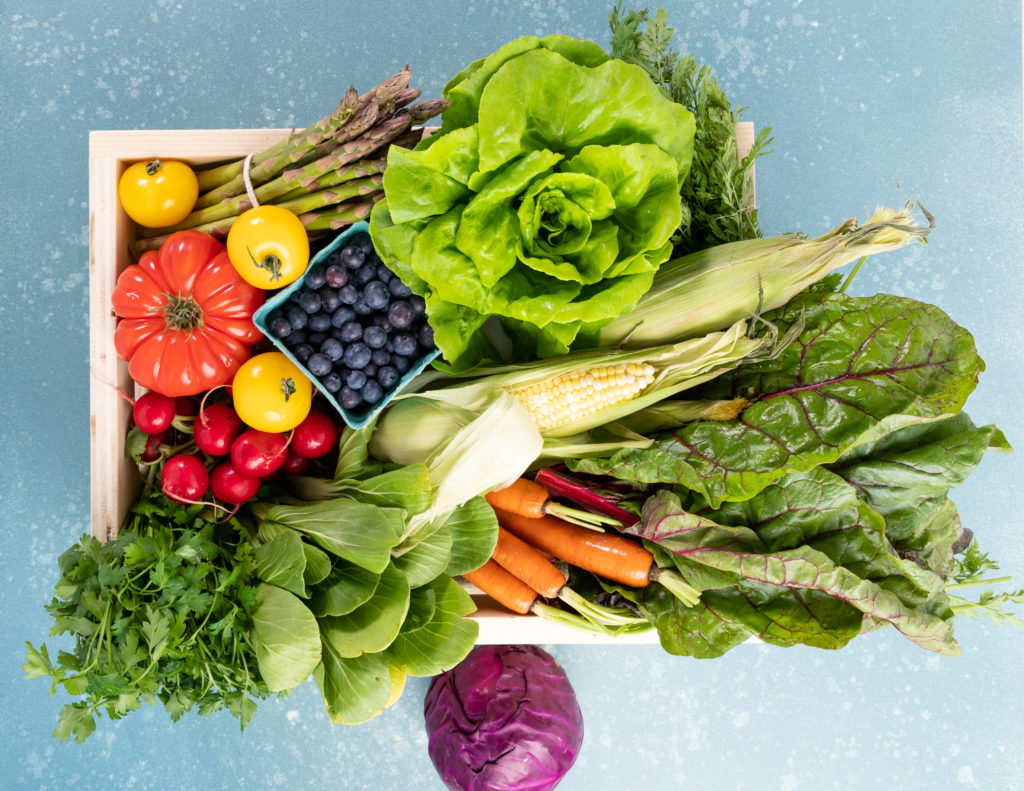
Proper produce storage is important because fresh fruits and veggies are a vital part of our daily diet. They’re also some of the most perishable items on your shopping list. Here are some easy, money-saving tricks to help your produce last longer, speed up your meal prep, and reduce how often you need to pick up fresh produce each week.
Get your fridge in order
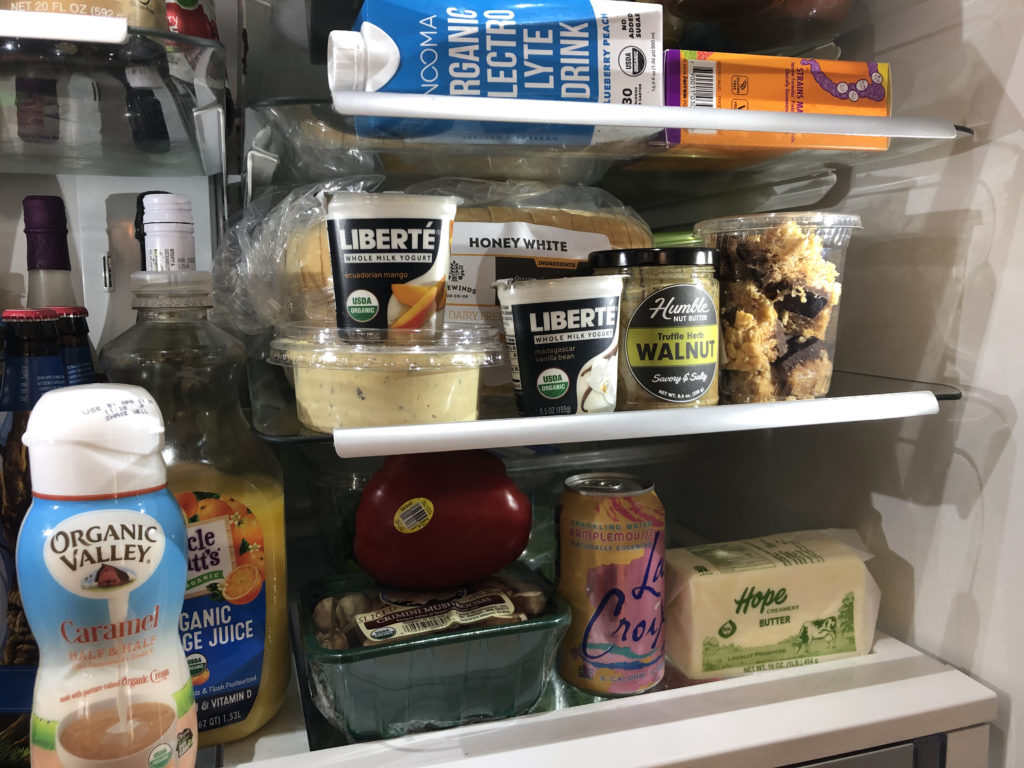
Organization is your best friend when it comes to proper produce storage, helping you keep inventory of what you have and its freshness.
Top Shelf
Store your leftovers and other ready-to-eat items like cheese, fruits, nuts, seeds, dips, and spreads at the top.
Middle Shelf
Store veggies and other food-safe items that need preparation in the middle.
Bottom Shelf
Store meat & fish on the bottom to prevent leaks or drips onto other food.
Fridge Door
Condiments, beverages, and other items that won’t go bad at a slightly warmer temp are best kept in the door.
Drawers & Crispers
Save drawers & crispers for fruits and veggies that are more prone to wilting or going soft.
If you feel the need to store an item in a container, we recommend clear reusables. They keep produce in sight and therefore in mind — if you can see the produce, you’re more likely to monitor and use it.
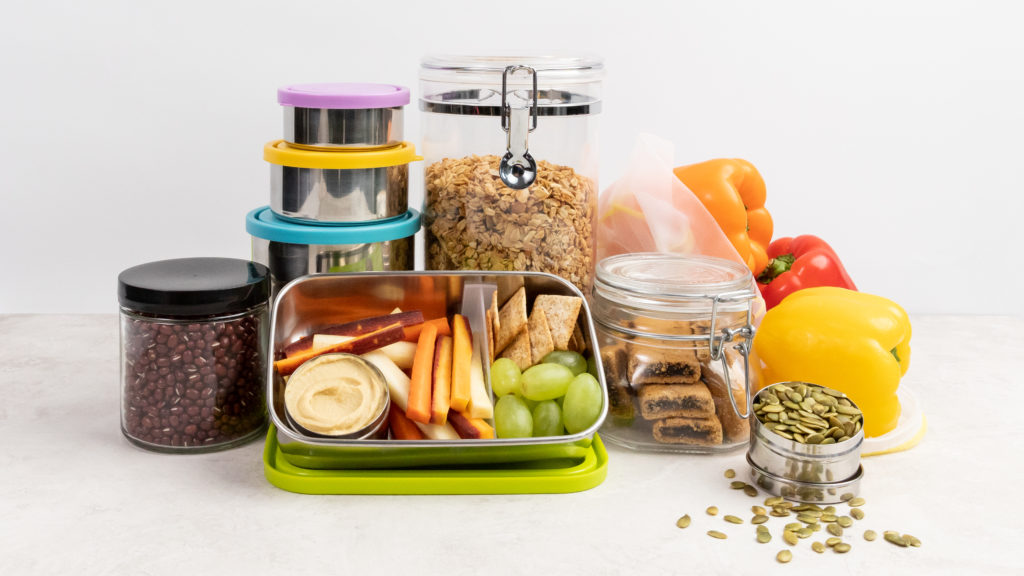
Here are some of our favorite reusable containers:
- Weck Jars
- Ball Jars
- Eco Jarz Lids
- Stasher Bags
- Fabric Produce Bags
Know your produce practices
Different produce items stay fresh with different storage methods. Try these tips to maximize the shelf life of your favorite produce items:
Asparagus
Stored in a plastic bag, asparagus can quickly begin to mold. To keep your asparagus fresh all week, fill a mason jar with 1-2 inches of water and place the bundle of asparagus into the jar. When ready to use, discard the water, rinse, and you’re ready to go!
Bean Sprouts
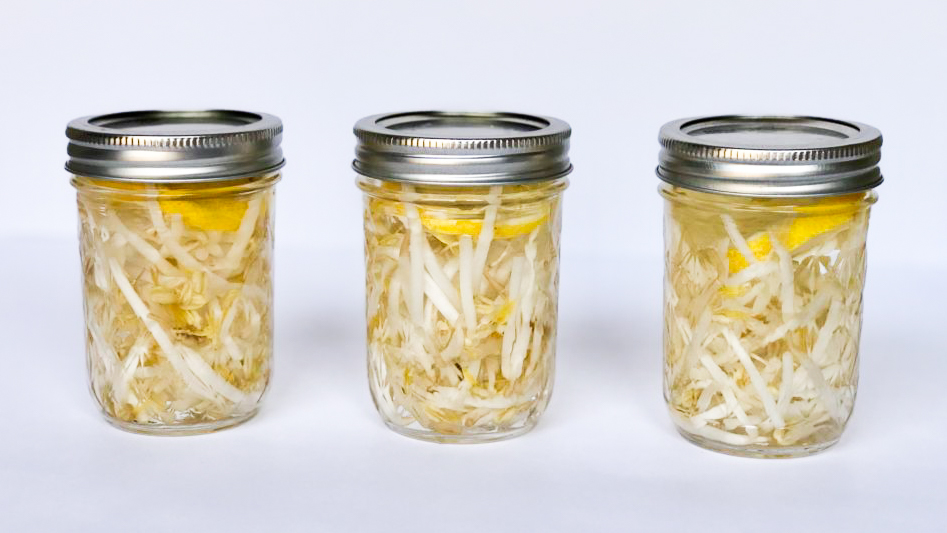
Immediately rinse bean sprouts under cold water, then place in a clean glass jar and cover with water. Place one or two lemon slices in the water at the top of the jar and seal. This should keep sprouts fresh and crunchy for up to a week.
Broccoli
For easy use throughout the week and maximum shelf life, prep broccoli when you first get home from the store:
- Chop and store the florets in a reusable container.
- Peel and chop the stalk, then store in a separate container.
- Wash the leaves under cold water, then store in a glass container with a damp paper tower to help absorb excess moisture.
Turmeric & Ginger
Store with skin left on! There are three good ways to store these tubers, depending on how soon you plan to use them:
- 0-7 days: store in a paper bag in the pantry.
- 7-30 days: store in a silicone or plastic bag with a paper towel to absorb excess moisture.
- 30-90 days: store in a plastic or silicone bag in the freezer. It will get mushy once thawed, but can be grated right out of the freezer and into dishes for best effect. If it does get mushy, simply use in dishes such as soups and curries – no problem!
Grapes
Grapes store best when kept unwashed and on-stem in an unsealed plastic bag or placed in a dish in the fridge. They should keep for about a week. For a cold, refreshing treat, you can freeze washed & destemmed grapes in a plastic bag on a baking sheet.
Eggplant
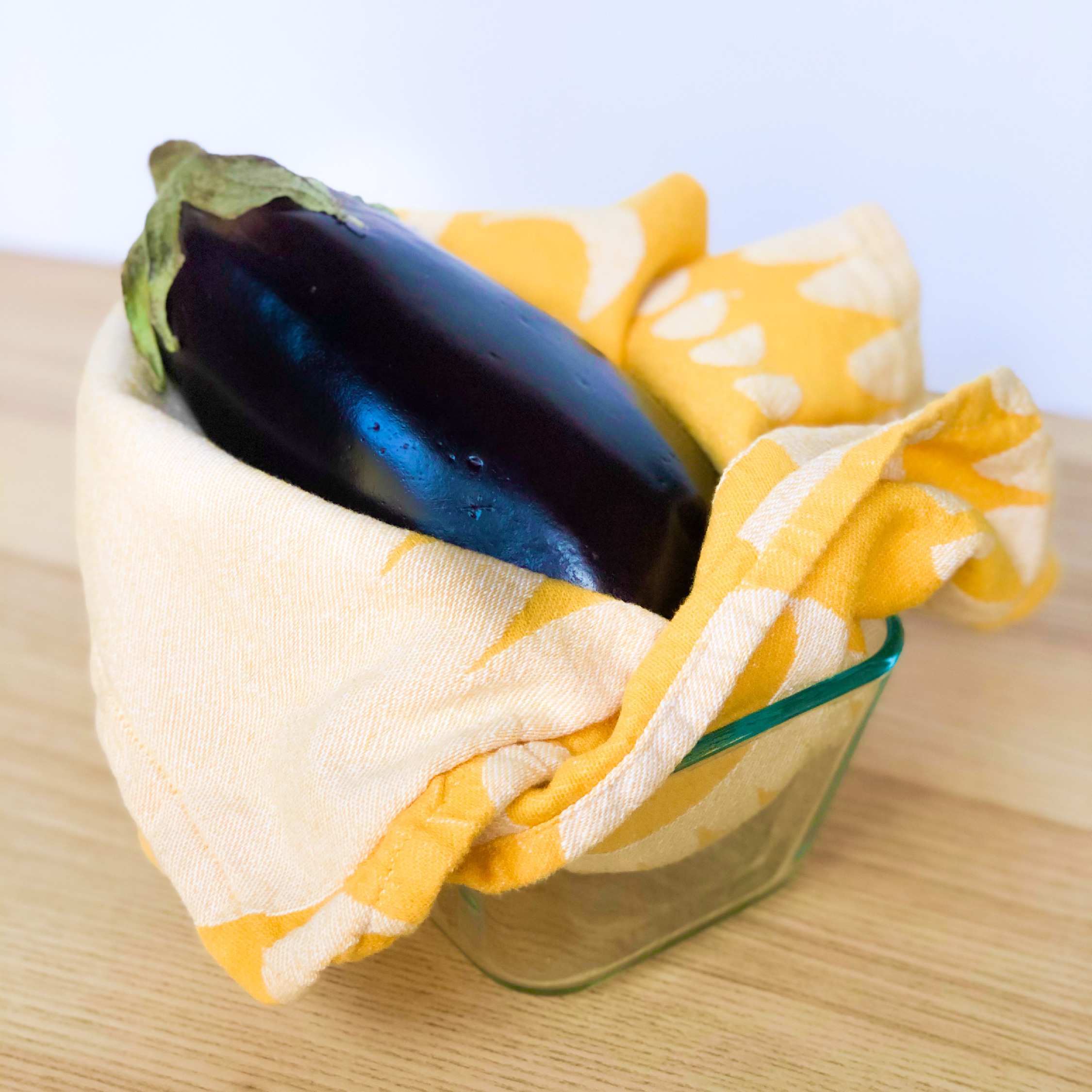
Take care when storing eggplants because of their sensitivity to ethylene gas, which causes them to quickly ripen. If using within 1-2 days, eggplants can sit on your counter in a cool, dry place. Otherwise, wrap each individual eggplant in a paper towel or cloth and place in a sealed container in the crisper drawer of your fridge (they should keep for about 5 days this way).
Mushrooms
Place mushrooms in a paper bag in your crisper drawer, as the paper bag allows the mushrooms to breathe and retain moisture. You can also place mushrooms in a glass container and cover with a damp paper towel before sealing so they don’t dry out.
Hardy Greens: Kale, Collards & Chard
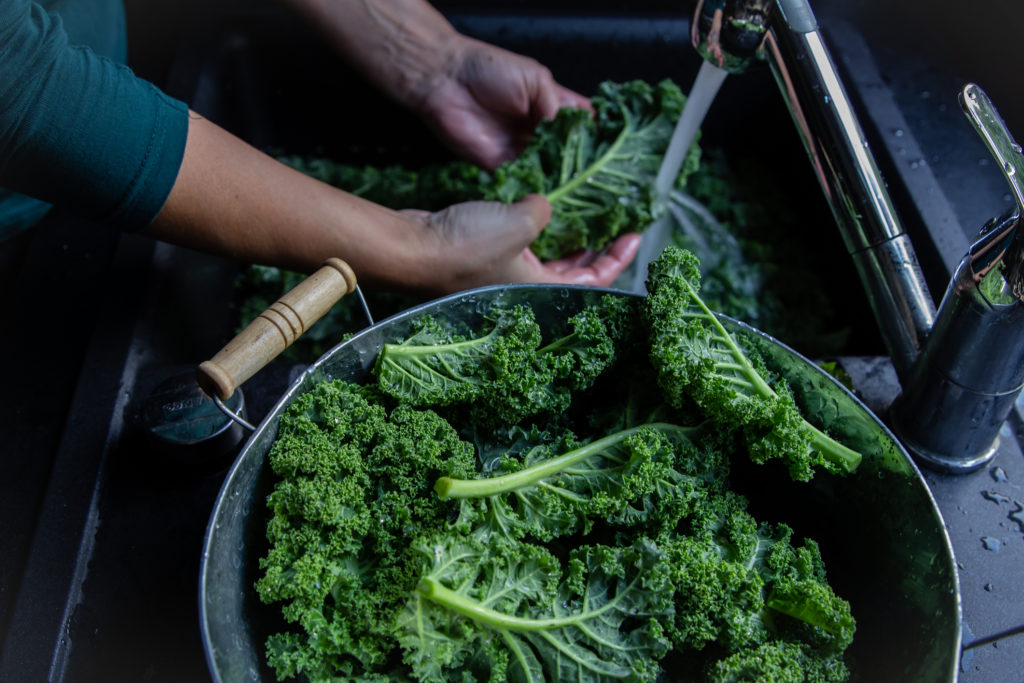
Hardy greens can last for up to a week stored in either of these two ways:
- Rinse each individual leaf and spread out on a towel. Roll the towel up and place in your fridge until ready to use.
- Rinse each individual leaf, chop or tear into desired size, and place in an airtight glass container for easy meal prep use throughout the week.
Radishes
Both radishes and their greens are edible, but they keep best separate.
- Remove the greens and store in a clean plastic or silicone bag with a paper towel to absorb excess moisture.
- Rinse the radishes and place in a clean glass jar or container and cover with water. You can also slice thinly with a knife or on a mandolin and cover in water. Both methods should keep radishes crisp for weeks in the fridge.
Scallions/Green Onions
Similar to asparagus, green onions can easily mold if left in plastic. First blot them with a paper towel to remove excess moisture and then cut in half.
- If using within a few days, place them upright in a mason jar and fill the bottom of the jar with 1-2 inches of water.
- If you want to keep them longer, place in a sealed glass container and wipe away any moisture buildup on the glass throughout the week. They should stay fresh for up to 2 weeks this way.
With a little foresight and preparation, you can extend the life of your fruits and vegetables, allowing you to have fresh produce for longer periods of time. Proper storage will help your produce last longer, speed up meal prep time, and reduce both trips to the store and your carbon footprint.
